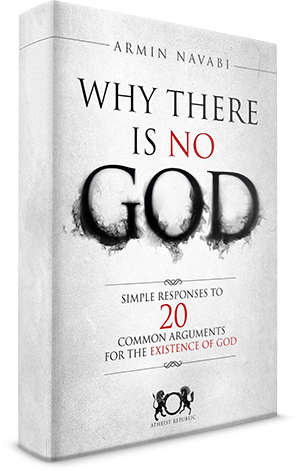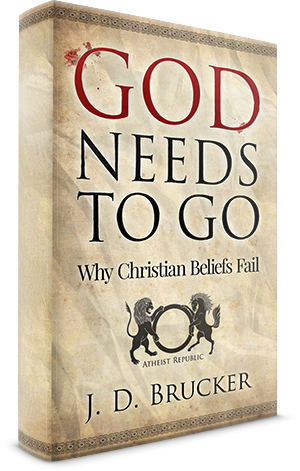
I am a firm believer in free speech, and also in fair access to mass communication transmission. It’s a nice ideal, but rather rough in practical implementation. It was wonderful to see so many people take up the cause of Charlie Hebdo recently. Many people are obviously in favor of free speech, even if it is considered to be insulting to some or even many people. So, why do I think it’s a lost cause? It’s because of a little thing called economic reality, or in other terms the “free market.”
No Change in Media Policy
In all the statements of support, both before and after the Charlie Hebdo murders, precious few mainstream media outlets actually republished any of the cartoons deemed to be “offensive.” If they are in favor of free speech, why not publish? If everyone is doing it, it makes it harder for terrorists to select one target (that is why some fish swim in schools, and some animals travel in herds). But they won’t take the risk for a number of reasons, all of which are largely economic in nature.
Insurance
All sizable businesses need insurance. It covers you in case you have an accident, or get robbed, or fire bombed, or have your employees gunned down by rabid fundamentalists. It is often a legal requirement to have it, and if not then it’s a highly ethical one, as it protects the shareholders, lenders, and employees in case of harm from an accident (like a fire, smoke, or even a broken chair resulting in someone’s injury).
It’s no surprise that insurance companies don’t care a fig about freedom of speech, they just care about risk predictability and they are actually very good at it. If they think that a firm’s policy allowing the publication of pictures of a controversial nature is likely to increase the chances of damage to the premises or employees which are covered by the insurance policy, then they will either refuse to cover the risk or charge more for it (American family planning offices that offer abortion services have this problem in many US States). Firms can self-insure, but it’s not likely that most are large enough to be able to do this efficiently.
I expect that many media firms in Europe, and elsewhere, will be hearing from their insurance agents during the next renewal period about attention to publications “with the potential to incite violence,” which is the sort of politically correct speech you get instead of saying “pictures or cartoons likely to piss off Muslims.[1]” Will companies hold fast to their freedom to publish what they want, or will they prefer to preserve their insurance coverage at competitive rates? Again, this is a case where if everyone stuck together they would not be at a competitive disadvantage. But as any adherent of game theory will tell you, people are likely to try for an advantage over their competitors rather than act in concert to their mutual advantage, and therefore will give into the requested restriction in hope that their competitors will take the higher road and have to pay the higher cost. As a result, they almost all take the same course in implementing self-censorship.
Remember, this is not related to whether the material is offensive or not, merely whether it is likely to result in an insurance claim. The Ku Klux Klan in America has some pretty offensive statements, but oddly enough they are not often subjected to violence, unlike women’s health clinics which offer abortion services in America, or European publications which feature cartoons offensive to Muslims. Health clinics in America typically have very high margins of profitability and limited competition, so can often absorb the additional costs or operate as tax-exempt entities. Most publications don’t have such options.
I suspect that this may have been part of the reason why Jyllans-Posten, the Danish newspaper which published Mohammad cartoons around ten years ago to great furor, decided not to republish the Charlie Hebdo cartoons. This is despite the fact that there is virtually no circulation of Danish language press outside of Denmark, and under 4% of the Danish population is Muslim. So there is unlikely to be much impact on either circulation or advertising revenue, due to the self-contained nature of the market.
Subscription Revenue
Publications make money from two principal sources. The first is direct sales or subscriptions. Presumably, if a certain group of people find material to be frequently offensive, then they may drop their subscriptions. This is a pretty simple calculation, and there are often niches which will support even extreme minority viewpoints. So publications that are small, and have the economics to remain small, can probably survive some controversy, and may even appeal to it. But this is not the case for large publications, especially ones with international circulation, which are very unlikely to jeopardize their circulation figures (which also directly affect the value of their advertising revenue). State supported news agencies are slightly different, as they only need report to the Government and not private shareholders, but Governments are also highly unlikely to countenance what are considered to be provocative activities that could result in harm to their nationals abroad or alienate any reasonable segment of local voters.
Publications that gain publicity, such as Charlie Hebdo, can enjoy a significant raise in subscriptions, but this is largely as a result of sympathy purchases, and most new subscribers probably will not be there in a year’s time. An issue related to subscriptions is distribution. As Charlie Hebdo found out also, many retailers refused to carry their publication after the murders, fearing that their kiosks or newsstands might be vandalized. This will have a long term impact on publications which are primarily circulated in physical form. Also, many bulk subscribers, which make publications available for their own customers (like airlines, medical offices, hotels, etc.,) may also want to reduce the risk of insult to some portion of their customer base. These businesses are not specialized, and deal with large and often highly diverse components of the community, so they are not going to be willing to risk disrupting any portion of their business for supporting “freedom of speech” issues.
Pure internet operations are different, and are probably safer from some types of cuts in subscriptions, although they risk being blocked entirely in various countries.
Advertising Revenue
What can I say? Very few product placements are to niche political markets, whether they promote free speech or not. You don’t sell one kind of shampoo to political conservative and another to liberals. Locke capitalists don’t buy a different brand of instant noodles than do Marx socialists. Some religions do have different dietary products, and some clothing, but for most of their purchases, like TVs, computers, mobile phones, cars, pharmaceuticals, washing powder, and cosmetics, its largely all the same. Age, gender, geographic location (try selling snowmobiles in Thailand), and levels of disposable income are the major criteria for initial consumer market segmentation.
The major advertisers are, again, not interested and do not benefit from being the champion of free speech. They wish to get their product message in front of a select target audience, and there is no upside in offending anyone. I seriously doubt that any corporation targets a “consumers committed to free speech” market segment. I mean what would they be collectively buying? Maybe bullet proof vests? Reprints of Joan Baez albums? There are housewives, single parents, diabetics, vegetarians, and a myriad of other identifiable and market tracked groups whose buying habits can be consistently predicted. But people who are in favor of free speech? Do they all buy Volvos, eschew mobile phones, and wear lace-up sneakers? Are they the ones wearing the bell-bottom jeans, paisley print shirts, and cravats?
For many markets, especially in Europe, Muslims are no longer an exclusively niche market. In many cases they are now part of the mainstream broadly defined middle class consuming public. This is a feature of their economic impact, either in terms of their wealth or population size. Organization also can be a feature of their attraction as a market segment. If an aggrieved group is well organized and has the resources to disrupt normal business activities of a publication that it feels is prejudicial to its interests, then this can be a factor as well.
There are lots of aggrieved minorities which have not been able to materially impact their treatment, or lack thereof, in the media. A prime example of this in the US are Native Americans, American Samoans (who are not entitled to full US citizenship), the disenfranchised residents of the District of Columbia (also, of Puerto Rico, Saipan and Guam, who have no voting Congressional representatives and do not effectively participate in Presidential elections) the homeless, the mentally ill, and in Europe a sad example is the Romany or Gypsies. These groups are unable to use economic clout to change their treatment in the press, and such changes as they have been able to address have largely been due to legal actions. In the US, in certain small markets where they are a significant economic or demographic group, Native Americans are accorded different treatment, but on the national scene they are largely inconsequential.
Muslims have moved ahead of their actual economic and demographic status partly because of their economic and demographic growth, but also arguably because of the extent that some members of the community are willing to go to in terms of applying violence to further their agenda. Also, they are one of the fastest growing segments in almost every Western country, so they represent a market of the future for companies wishing to develop long-term brand loyalty.
So what’s left?
So, if all these economic factors play against a publication dedicated to free speech which is capable of negatively exciting a violence prone segment of the consuming public, what is left? What we saw in the aftermath of Charlie Hebdo was a lot of people saying “we stand with you” but almost no one following the same principles. Remember, the freeze in speech deemed to be incendiary started years ago after the Muslim boycott of Denmark and numerous threats of violence as a reaction to some cartoons. And next time there is another violent reaction, just as with Jyllans-Posten and now Charlie Hebdo, there will be ever fewer publications willing to chart the same course. Not because of lack of conviction, but because of lack of economic incentive and positive economic detriments.
Sadly, there is no solution that I can see. Violence works when it comes to stifling institutional free speech. So, all I can say is “Long live the internet”, where, for now, some degree of personal free speech (largely via corporate controlled access points) still can reach out to more people than can hear you when you stand on a soap box. At some point, this may change too; but for now, let’s enjoy it while we can.
References:
[1] By the way, it’s not just Muslims, although Muslim violence is the more recent and arguably more violent than others have been. Christians and Jews in America and Europe tend to litigate and bring pressure on advertisers. Jewish groups have been very successful in getting even rather mundane critical comments branded as default “hate speech” and, as such, it is criminalized in many countries already. Over the years, there have been instances of violence from virtually every group imaginable; such as Mormons, Scientologists, Amish, Buddhists, etc. but I haven’t come across any references about Jain violence, so maybe there is one exception to the rule.





























